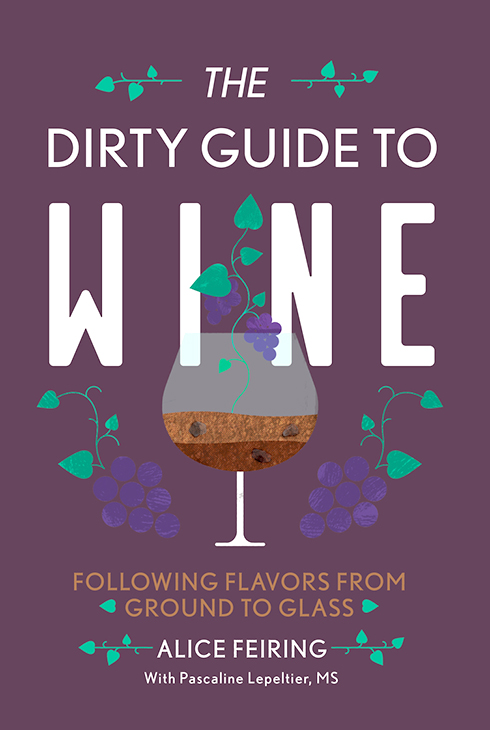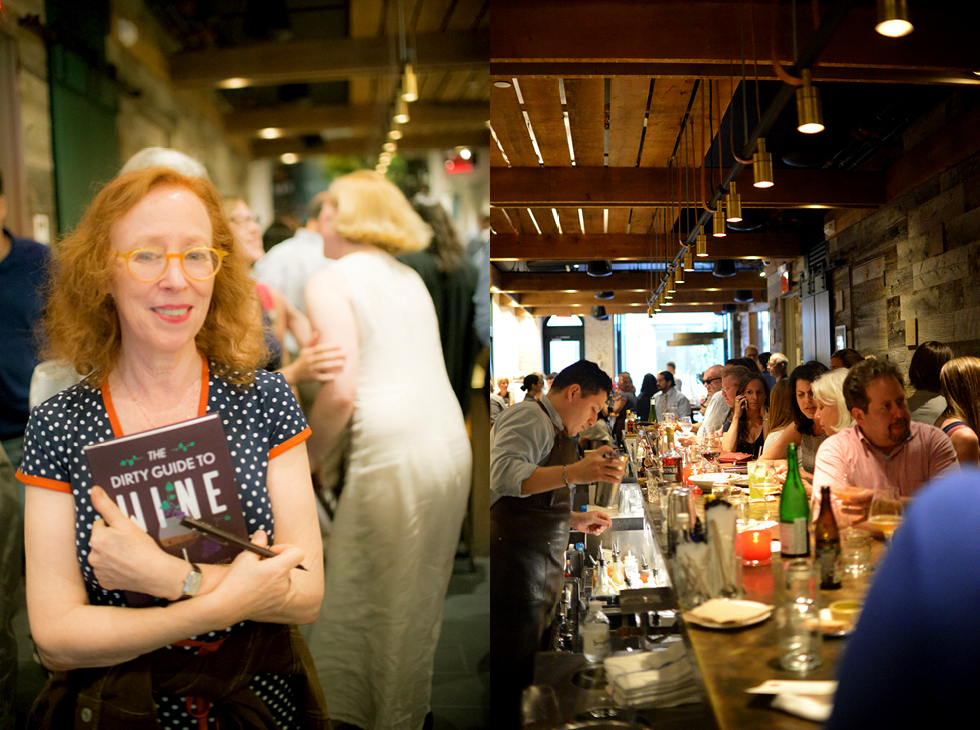How does dirt affect the taste of wine? Alice Feiring, a wine writer noted for her penchant for learning about natural wines has come out a with a new book. The Dirty Guide to Wine focuses on the different bedrocks and topsoils and how they affect the acidity and tannins in natural wines.
LEARNING BY TASTING THE WINES
To test the theory I attended a very special tasting dinner at Rouge Tomate in Chelsea, where Feiring and co-author Pacaline Lepeltier provided proof for the pudding. Here we sampled wines from each soil type: Igneous (volcanic); Sedimentary (sanstone/limestone); and Metamorphic (slate/schist); plus the Alsace region, which is considered a category in itself. We covered all the details in another post (see the dinner).

HOW THE BOOK IS SET UP
Alice takes on the subject in a diverting and engrossing way, sharing her personal stories from travels around the globe with her goal of encouraging people to look beyond the grape.
With each category, Feiring explains the nature of the individual soils and recommends specific wineries. A clever wine tasting primer at the end of each chapter is designed to further your eduction, and HOBNOB suggests you use this as an excuse to host your next wine tasting.
Throughout you’ll learn about the best natural wines, with which, Feiring alludes, eliminate hangovers, due to the lack of added sulfur dioxide. That may be the best news of all!
The Dirty Guide to Wine: Following Flavors from Ground to Glass


